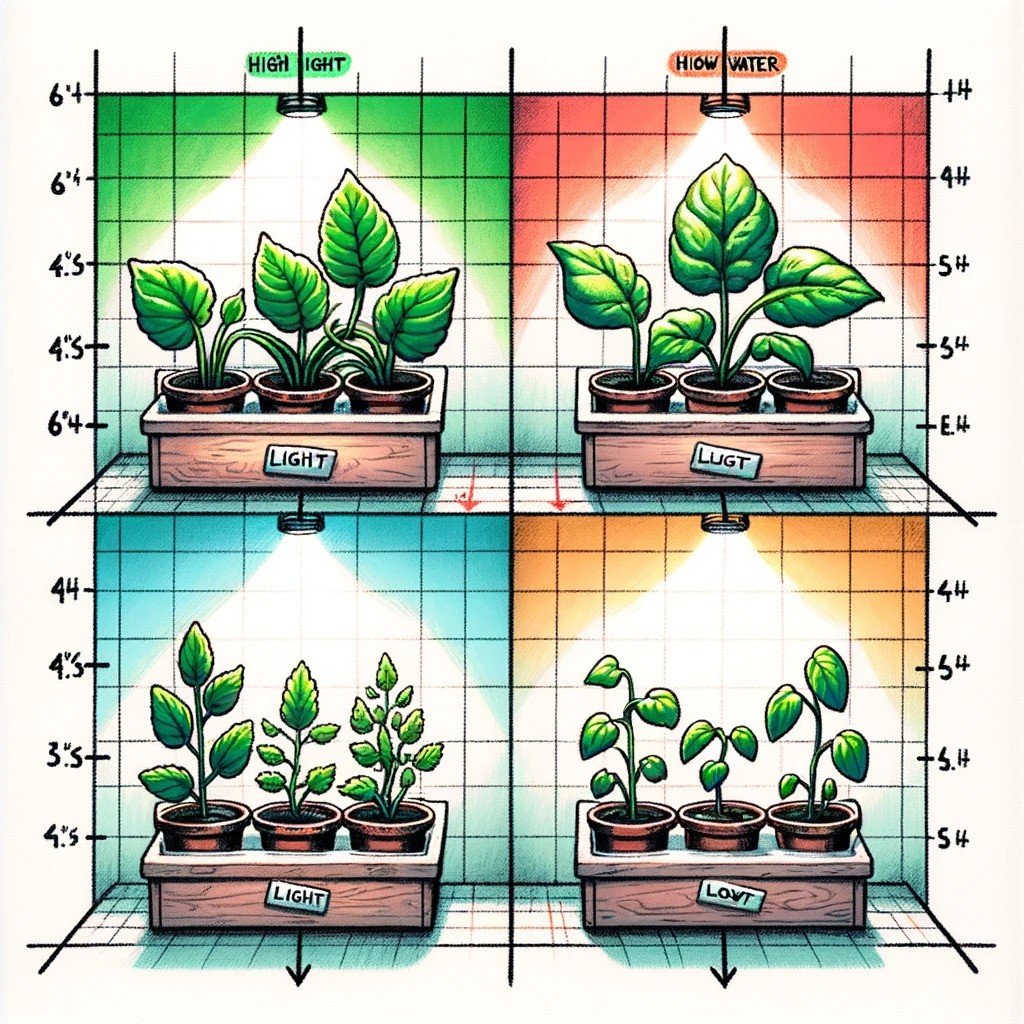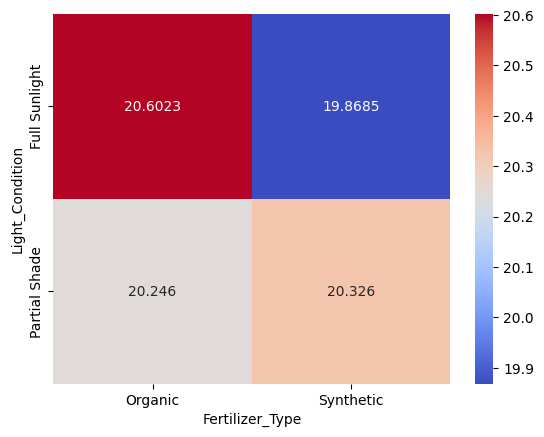Factorial designs: principles and applications
Experimental Design in Python

James Chapman
Curriculum Manager, DataCamp
Understanding factorial design
- Study multiple independent variables/factors in one experiment
- Test every combination of factor levels
- Discover direct effects and interactions between factors

1 Image Generated with DALL·E 3
Factorial design data example
- Factor 1 (
Light_Condition) - two levels:Full SunlightandPartial Shade - Factor 2 (
Fertilizer_Type) - two levels:SyntheticandOrganic - Numeric response/dependent/outcome variable:
Growth_cm
plant_growth_data.head()
Plant_ID Light_Condition Fertilizer_Type Growth_cm
0 1 Full Sunlight Synthetic 16.489735
1 2 Partial Shade Organic 18.361689
2 3 Full Sunlight Synthetic 18.039459
3 4 Full Sunlight Organic 12.682425
4 5 Full Sunlight Organic 21.480601
Organizing data to visualize interactions
plant_growth = pd.pivot_table(plant_growth_data, values='Growth_cm', index='Light_Condition', columns='Fertilizer_Type', aggfunc='mean')plant_growth
Light_Condition Organic Synthetic
Full Sunlight 20.602 19.869
Partial Shade 20.246 20.326
Visualize interactions with heatmap
import seaborn as sns
import matplotlib.pyplot as plt
sns.heatmap(plant_growth,
annot=True,
cmap='coolwarm',
fmt='g')
plt.show()

Interpreting interactions
Light_Condition Organic Synthetic
Full Sunlight 20.602 19.869
Partial Shade 20.246 20.326
- Interactions: how the effect of one factor varies with the level of another factor
- Significant interaction → factors do not work independently
Factorial designs vs. randomized block designs
- Multiple treatments and interactions
- Dissect complex multi-variable effects and interactions
- Can require more subjects

- Group similar subjects in randomized designs
- Control within-block variance
- Each treatment is tested within every block

1 Images Generated with DALL·E 3
Let's practice!
Experimental Design in Python

